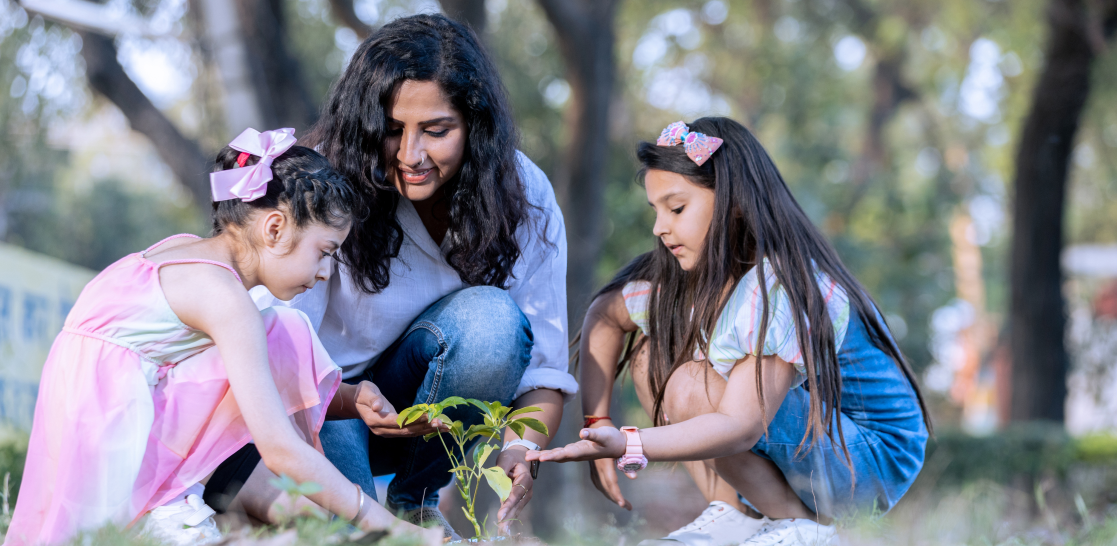![]()
Nature-based learning, also known as outdoor education or outdoor learning, is increasingly being recognised as a transformative approach to early education. Here’s how it’s making an impact:
In an era where children are increasingly glued to screens and indoor activities, there has been a notable resurgence in outdoor education, particularly in early childhood settings. Outdoor education broadly refers to a range of organised activities that predominantly take place outside the four walls of a classroom. Here, the environment plays the role of the ‘third teacher’. From encouraging children to participate in extra- and co-curricular activities to going on field trips and treks, these help nurture their holistic development. This trend reflects a growing recognition of the immense benefits that nature-based learning offers to young minds.
Furthermore, outdoor education is predicated on the philosophy of play and playfulness, which has connections to key competencies such as the development of thinking and learning (cognitive) skills, problem-solving abilities, self-regulation, and collaborative work.
Aanchal Vasandani, Vice President Content, VIBGYOR Group of Schools has shared five emerging trends in nature-based learning for young children and ten innovative practices in social-emotional learning within early childhood education.
1. NATURE IMMERSION
Nature is the ultimate classroom for early childhood development and educators are recognising the colossal benefits of immersing young children in nature. Outdoor education and nature-based learning ignite children’s innate curiosity and sense of wonder. Nature-based learning not only fosters a deep connection with the environment, but also enhances sensory awareness, creativity, and personal, social, and environmental growth, through experiential learning.
2. ENVIRONMENTAL STEWARDSHIP
Schools are incorporating reformative practices to instill connection and commitment to the environment from a young age. Children engage in activities like gardening, composting, and wildlife conservation, fostering a sense of respect and care for the planet (i.e. environmental awareness and sustainability).
3. ADVENTURE-BASED LEARNING
Activities, such as hiking and camping, provide opportunities for children to challenge themselves, collaborate with peers, and build resilience. These experiences promote physical fitness, risk-taking abilities, and teamwork. It also allows children to connect with the world around them, not through a screen, but through their senses and imagination.
4. NATURE-INSPIRED CURRICULUM
Integrating nature into the curriculum across subjects like science, art, and language arts promotes interdisciplinary learning. Through hands-on experiences and observation, children develop a deeper understanding of ecological concepts and a sense of wonder about the natural world.
5. NATURE-BASED STORYTELLING
Nature-based storytelling activities promote children’s interaction with the natural environment through literature and imaginative play. Reading nature-themed books, forming outdoor story circles, and acting out stories in natural settings help children develop language skills, creativity, and a deeper connection to the environment.
The rise of outdoor education reflects a growing recognition of the importance of nature in children’s lives. By embracing this approach, we as educators not only prepare our children for academic success, but they also develop a profound association with the natural world, as they become responsible environmental ambassadors.
Article published on India Today
Check out VIBGYOR Group of Schools’ Nature club that works towards developing sensitivity and sensibility towards nature.
